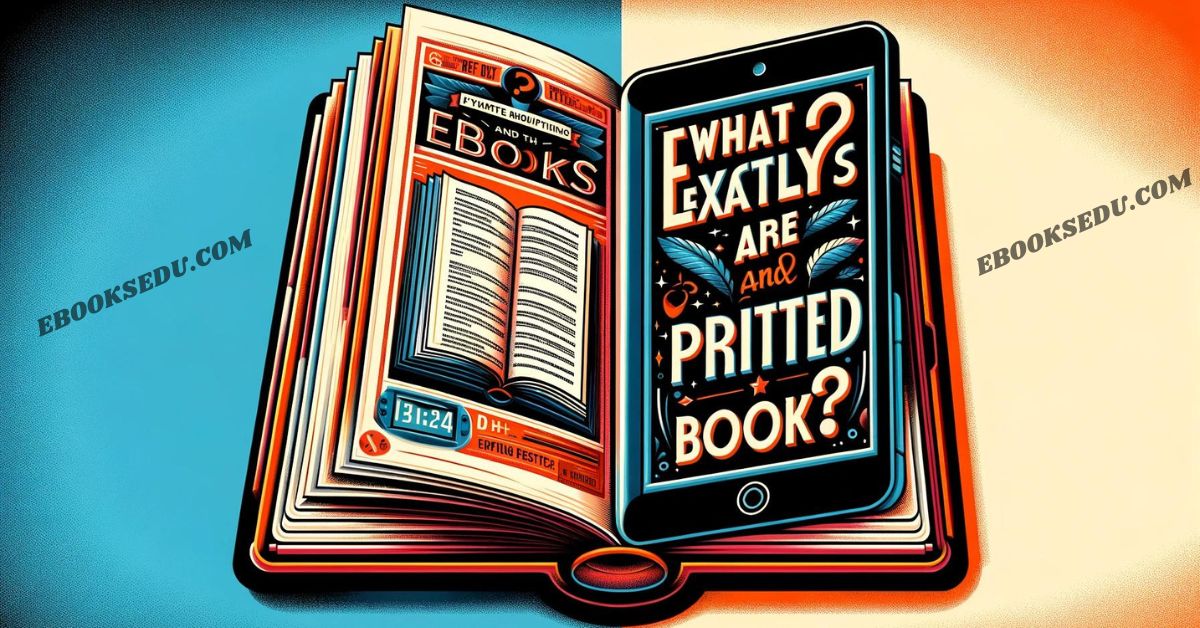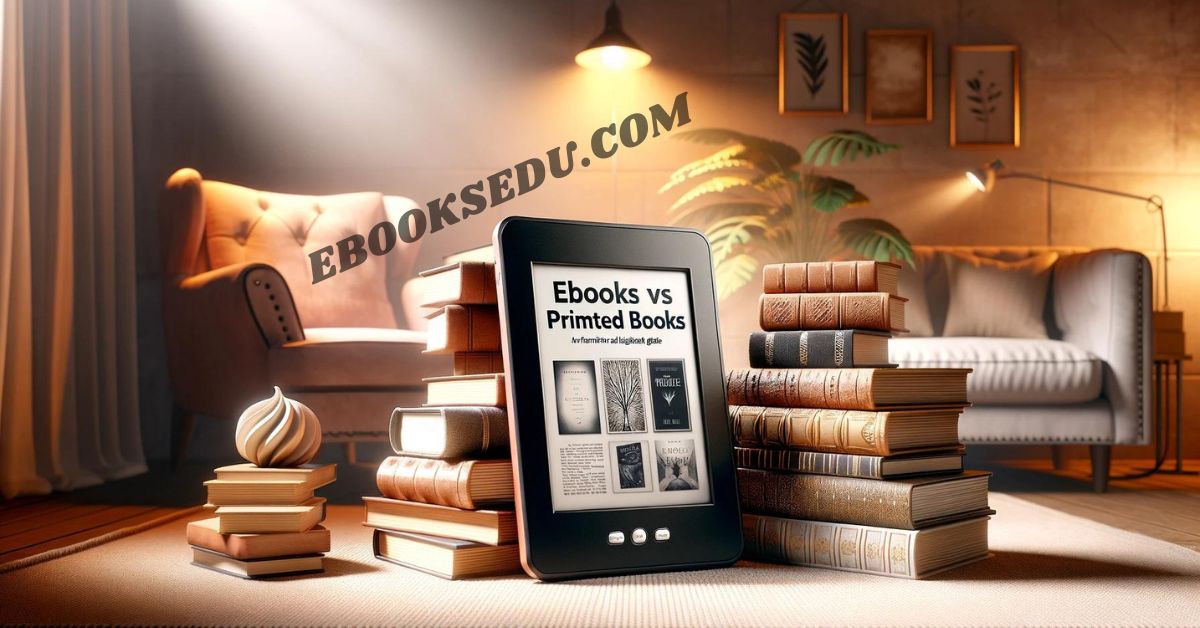Comparing E-books and Printed Books: An Educational and Fun Guide The argument over eBooks vs. physical books in the current digital era is like deciding between ordering takeout or cooking at home—both satisfy the need for information in very different ways. This guide will coach you through the ins and outs of both media, whether you’re a tech-savvy reader or a paper lover—ideally without causing a paper cut or low battery fear.
What Exactly Are eBooks and Printed Books?

eBooks, short for electronic books, are the digital answer to the call of reading. They are accessible on various devices, including e-readers, tablets, and smartphones. Imagine carrying an entire library in your pocket, minus the weight and the need for a giant bag.
On the other hand, printed books are the old-school heroes of literature. They come in all shapes and sizes, with covers that range from plain to extravagantly artistic. Holding a printed book is like having a piece of history—inky, sometimes musty, and often nostalgic.
The Convenience Factor
When it comes to convenience, eBooks often take the prize. With a few taps, you can download thousands of books and carry them wherever you go, especially if you’re trying not to overpack for a vacation. On the flip side, printed books require physical storage. Have you ever tried fitting a 700-page hardcover into a purse? Not so convenient.
However, printed books have batteries that die just as you reach the climax of a story, always ready to go, with no charging necessary. Plus, they give you the perfect excuse to visit that cute little bookstore around the corner.
The Sensory Experience
Printed books offer a sensory experience that eBooks struggle to match. There’s something about the smell of printed paper and the sound of turning pages that feels profoundly satisfying. It’s the kind of pleasure that gets bibliophiles nodding in agreement, almost religiously.
While not great at engaging the olfactory senses, eBooks shine in adjustability. Changing font sizes for easier reading and backlighting for night-time reading are perks printed books can’t offer. It’s reading made easy, even for those who forgot their glasses.
The Environmental and Economic Impact
Going Green with eBooks?
The environmental impact of eBooks vs printed books is a hot topic. eBooks tout a lower carbon footprint—no trees harmed in making this eBook! However, they are not without environmental costs, including the energy used by the devices they are read on and the servers storing all that digital content.
In contrast, printed books use paper, and lots of it, which means trees. The production process also involves water, chemicals, and significant energy. However, improvements in recycling and printing technology have begun to mitigate these impacts.
Cost Comparison
On the cost front, eBooks generally boast lower prices, which is excellent for your wallet. They also offer the ability to share content across multiple devices without buying multiple copies. Imagine buying and sharing one book with your entire family—assuming you all use the same eBook platform.
Printed books can be a bit pricier, but they hold value in ways digital files cannot. They can be shared, resold, or even donated, giving them a lifespan beyond the first read.
Cultural Significance and Accessibility
Preserving Culture
Printed books have a traditional value that is deeply embedded in our culture. They are artifacts, part of our material heritage. Libraries full of ancient texts and first editions are treasures that remind us of our long history with the written word.
eBooks offer a different kind of cultural preservation: they make it easier to access and preserve copies of rare texts that might otherwise deteriorate. Digital libraries can house millions of works and are available to anyone with an internet connection, which is a win for accessibility.
Accessibility for All
Speaking of accessibility, eBooks shine by offering various features that make reading accessible to people with disabilities. Text-to-speech functions, adjustable text sizes, and high-contrast modes are just a few ways eBooks make reading more accessible for everyone.
While printed books offer a tangible experience, they can be challenging for those with specific disabilities. Heavy books are hard to handle, and small print can strain the eyes.
Final Thoughts: Which is Better in the eBooks vs Printed Books Debate?
The choice between eBooks and printed books is personal, much like coffee and tea. Each has its benefits and its fervent fans. As we advance technologically, perhaps the best approach is a hybrid—mixing ink with electrons to maximize both benefits.
Whether you sway towards the digital or the tangible, remember that the real winner is reading itself. So, pick up a book or a tablet and dive into another world because the magic of reading knows no bounds.
For more insights and resources, visit EBooks EDU, your go-to destination for all things reading. Happy reading, and may your battery always be charged, and your bookshelf always be inspiring!
